#ukrainians will resist
Text
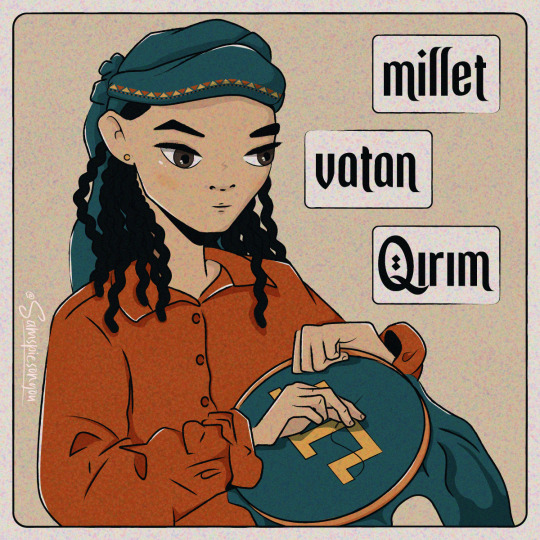
Today, May 18, marks the 80th anniversary of the forced removal of the Crimean Tatars from their native Crimea by the Soviet authorities. This deportation is called Sürgünlik.
Now, in occupied by russia Crimea, the Crimean Tatars are once again suffering from repression. Their homes are being searched, they are being arrested, their culture is being destroyed.
Ukraine is doing everything possible to defeat this evil. Because this evil must be defeated.
Free nations must be free.
#qirim tatars#qirim#millet vatan qirim#crimea#жовта стрічка#украрт#resistance#solidarity#stop occupation#ukraine#укртумбочка#ukrainian art#remember genocide may 18
261 notes
·
View notes
Text
And that's why she's a Queen
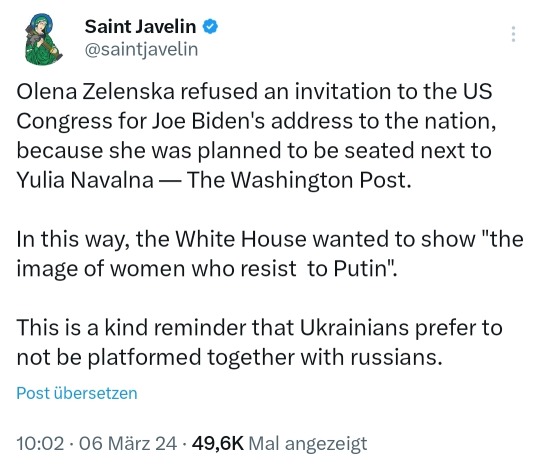
#the fact they even had this idea...#no need to insult the first lady and a whole country like that#the last sentence of saint javelin very much#friendly reminder that the whole Navalny family are neither friends nor supporters of ukraine and are highly problematic#and Navalny is not the perfect little angel now everyone pretends him to be#that so many in the west now worship him and kiss his wife's feet and completely ignoring what he said and supported in the west#but god forbid one Ukrainian breathes in the wrong way or ze forget to say thank you at some point#“the image of women resisting putin” my ass#no need to pretend theyre the same and no need to insult olena like that#still cant grasp the fact that someone was like oh were letting them die and stop important aid for month#but let's invite her so she looks pretty in the background#this is insulting on so many levels#to reduce her to just a pretty object jfc#alao the audacity to put her next to that woman and in the same room with the people who are responsible for Ukrainians dying
63 notes
·
View notes
Text
They are our warriors💙Our pride💛
Every day they risk their lives for our freedom...


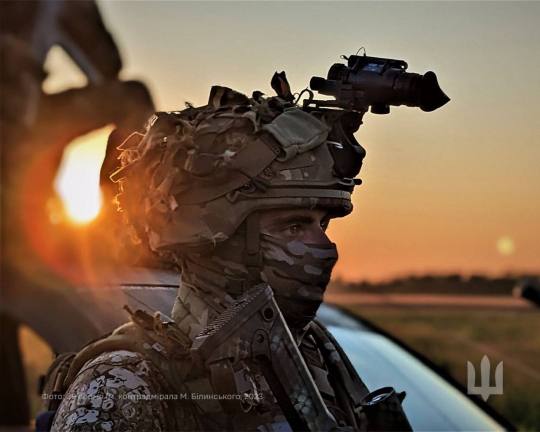


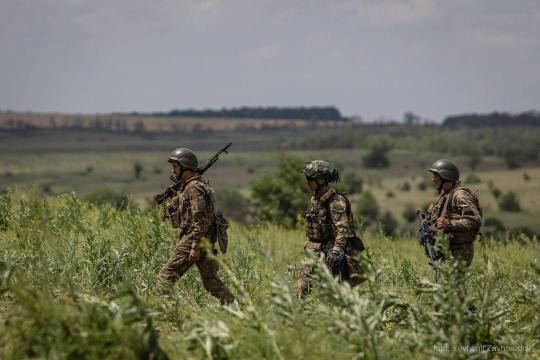




Велика Подяка нашим Захисникам та Захисницям
Слава Героям України🇺🇦
Glory to the Heroes of Ukraine
#army#ukrainian armed forces#ukrainian heroes#ukraine#war in ukraine#ukrainians#fight for motherland#fight for freedom#pray for ukraine#pray for ukrainian soldiers#soldiers#war 2023#battlefield#war#pray for ukrainians#stand with ukraine#russian invasion#we will win#we will resist#ukraine under attack#russia war criminal#stop russia#glory to ukraine#glory to the heroes#укртумба#Україна#українці#Україна Єдина#ЗСУ#Слава Збройним Силам України
105 notes
·
View notes
Text

News from Poland are sadder and sadder
It's not like Ukrainians didn't know about Poland keeping trade with russia, btw, but we used to close our eyes to that because Poland helped us a lot. However, cases like this one are just stupid and screaming.
#stop russian aggression#support ukraine#genocide of ukrainians#russia is a terrorist state#Poland#Hungary resisted so they try now to lead Poland to chaos
15 notes
·
View notes
Text
prev reblog about the hypocrisy in the difference in coverage between Ukraine and the most recent atrocities in Palestine is so fucking true. it boils my blood how most people in my classes were in support or could easily be pushed to be in support of Ukraine and how [relatively] easy it was to tear down russian talking points- yet i hear zionist talking points so often.
i had a guy sit down next to me last week and talk about how hes upset at the decrease in support for Ukraine- i haven't heard him say anything about Palestine since a month or two ago i screamed in his face for repeating Zionist talking points about 'self defense' and refusing to listen to me and have empathy for the Palestinian people.
repeating some quotes the same Guardian article used to make its point that are very true of the mindset i see people holding:
“It’s very emotional for me because I see European people with blue eyes and blond hair … being killed every day.”
“Now the unthinkable has happened to them. And this is not a developing, third world nation. This is Europe!”
“They seem so like us. That is what makes it so shocking. Ukraine is a European country. Its people watch Netflix and have Instagram accounts, vote in free elections and read uncensored newspapers. War is no longer something visited upon impoverished and remote populations.”
these people only cared about Ukraine because it hit to close to home, ruined the idea that they were safe from war. these people are not speaking up about Palestine. these people make me sick.
#thebirdspeaks#palestine#i had so much sympathy for having Ukrainian family#people were supporting them and applauding the Ukrainian resistance#now they parrot zionist talking points just like the people they laughed at for repeating russian ones#i could get people to shut up and change their mind by tearfully recounting stories of my elderly great aunt trapped in a warzone with only#a phone line and Ukrainian red cross food packages between her and starvation#now it doesn't matter how many stories i retell about Palestine#bc it doesn't aline with the political interests of the imperial core#so they dont fucking listen or sympathize#dont humanize#fucking hypocrites#i dont value their sympathies or support for Ukraine anymore#and wont unless they support Palestinian liberation as much as they did/do Ukrainian
8 notes
·
View notes
Text
My beloved city, we will definitely endure💙💛The last few days have been the toughest nights of the entire war. The aggressors have attacked us with missiles and Shaheed. I feel such a mixture of pain and pride for our people.
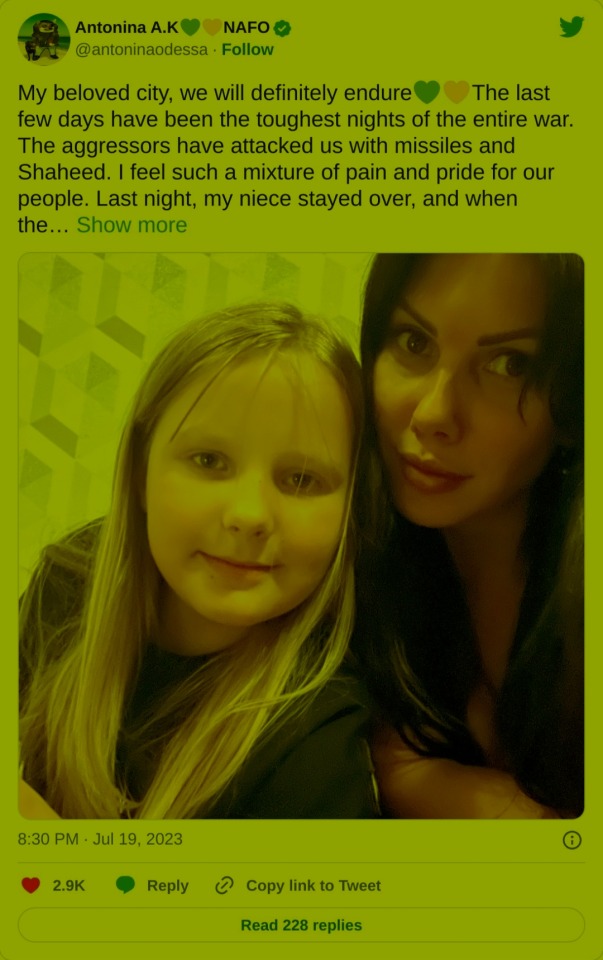
Last night,
my niece stayed over,
and when the explosions began,
I hesitated to wake the child.
I sat on the floor next to her bed, prepared to shield her with my body if needed.
The attacks intensified, and eventually,
I had to wake her up.
My dog ❤️ lay at our feet,
we all sat on the floor together,
hoping for God's protection 🙏 and relying on our Ukrainian Air Defense💙💛.
You know, after such nights, my questions are not directed at God, nor at ordinary people, or even the aggressors.

My one question is for the world leaders: why do you say that we cannot use Western weapons to attack russians territory ?
⭐Do you consider the lives of our people less valuable?
⭐ Have you ever shielded your children with your own body?
⭐Why has everyone forgotten about Kherson, Bucha, Mariupol?
⭐Why isn't the Zaporizhzhia Nuclear Power Plant equally terrifying?
After such sleepless nights for our children, 💥we have every right to wipe the kremlin off the face of the earth. 💥
I feel the pain for our people, but we are not broken 💪 .
We continue to move forward.
There's still champagne in the fridge that I will open on Victory Day.
I love you, my city❤️you are our fortress, you give us strength🫶
#Odesa
#GloryToGod
#GlorytoAFU
#odesa port#russian bombing#ukrainian women#ukrainian children#russian brutality#russian barbarism#pledge to world leaders#ukraine resistance#stop russian invasion#putin war criminal#stop putin#help ukraine#give weapons to ukraine#i stand with ukraine#slava ukraini
26 notes
·
View notes
Text
>Mélovin is on the list for Vidbir this year
PLEASE UKRAINE I NEED YOU TO SEND HIM
I DON'T NEED HIM TO WIN ESC
I JUST NEED HIM TO BEAT ISRAEL

#2024: REVENGE OF THE GOTHS is a GO#(alt title: for the glory of the Ukrainian-Palestine resistance)#Melovin#Mélovin#Vidbir#Eurovision#ESC 2024#croak.txt
12 notes
·
View notes
Link
29 notes
·
View notes
Text



$$ from zine sales going to anti-authoritarian Ukrainians on the frontlines and LGBTQIA+ initiatives in the country <3
#ukrainian#ukrainian resistance#ukrainian language#zine#satire#sarcasm#antifascist#ukrainian war#fundraising
20 notes
·
View notes
Photo
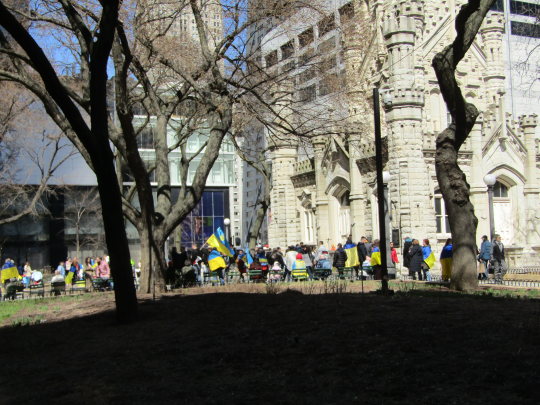




Amber Alert: Russia is Kidnapping Ukrainian Children rally - 02.04.2023 by Strannik45
Via Flickr: More photos here
The rally was organized by Chicago's Ukrainian community to bring attention to the issue that earned Russian President Vladimir Putin an arrest warrant - what Russia has been doing in Ukrainian kids in the occupied territories.
As with many things happening in the Ukrainian War, there are several things going on. First, Russian forces have been taking kids that were orphaned (or whose next of kin couldn't be found right away, or whose next of kin aren't in the occupied territories) and sending them to Russia to be adopted. And, if there is any question about the ultimate goal of this, Russian government recently gave grants to "help children embrace to their new homeland."
There is also the part where several kids in occupied areas (mostly Kherson Oblast) who were taken to summer camps in Russia, and when the territories were liberated, Russians weren't exactly willing to give those kids back. And families have no way of getting in touch with them. And if that sounds like a nightmare - congratulations, you have a conscience.
The rally was scheduled to kick off at the Old Water Tower, then proceed down Michigan Avenue toward Millennium Park, culminating at the Cloud Gate/the Bean. Now, what I don't think the organizers realized was that the Revolutionary Communist Party was going to have a rally at the northwest corner of the Millennium Park, also at 2:00 PM. It was on my radar, but I wasn't sure, given the timing, if the twain shall meet.
Well, RevComm noticed them as they were arriving, and decided to preach their mission of how everyone should stop the "US/NATO Proxy War." I'm not entirely sure if they got to other parts of their spiel, like that Maidan protests were a NATO scheme, that NATO expansion provoked Putin and, oh, that Russia hasn't been Communist since 1950s and that Stalin was a communist "who made a lot of mistakes." But, suffice to say, the Ukrainians were not amused. Chants of "Commies Go Home" got thrown around.
Still, given the vast disparity in numbers, the communists did ultimately leave, and the rally was finished as planned.
#Flickr#Ukrainians#war in ukraine#russian war crimes#rally#ukrainian rally#russian resistance#chicago#чикаго#митинг#путин хуйло#украинцы#revolutionary communist party#revcom#american communists#tankies
9 notes
·
View notes
Text
.
#I should get back to fandom activities#update my fics#and similar stuff#but I am so involved in following the war. I mean#the Ukrainian resistance against the rashist aggression#I can't believe ppl around me don't support them. are fake pacifists#believe russian propaganda blaming anyone except russia#I'm so angry and pissed off tbh#I can't focus on anything else#it's kinda like the culture and certainties I was raised with were destroyed and now I know it was all rashist propaganda#I'm glad I know now#and I'm angry that others don't see it and still cling to that shit#(btw this is just my personal vent. I'm not complaining or trying to put myself in the center of attention thus stealing it to real victims)#i mean I am totally complaining but as a personal thing. about how sad it is when ppl around us see things through a shitty filter#of propaganda and nothing helps. I've been reading so much and I tried explaining them but nothing
10 notes
·
View notes
Photo

“Funérailles Rouges Dans La Rue Arcade,” Le Petit Journal. March 12, 1933. Page 1.
----
Une foule considerable assistait, hier midi, aux funérailles de Nick Zynchuck, tui accidentellement par le policier Zappa lundi dernier. Communistes, chômeurs, curieux et policiers se coudoyaient dans une atmosphère de méfiance. presque meute. Notre photo de gauche montre l'extraordinaire densité de la foule autour du cercaeil de Zynchuck, au moment où on plaçait celui-ci dans le corbillard pour le mener au cimetière de Lake-View. Remarques les placards et les banderoles que portaient les chefs des sympathisants du mort. La photo de droite indique avec quel soin le Police prévenu les bagarres, On voit ici les “constables spéciaux" empêchant une bataille, tandis que trois femmes s'éloignent en tonte hâte.
[AL: The police did not ‘stop’ any fighting - the funeral of Zynchuk, himself killed by a policeman while resisting his eviction, became a police riot, as the special constables beat and abused men, women and children, including unconnected passerby and a Montreal Gazette journalist. Below the cut I’m including a lengthy English language analysis of this incident from Molinaro’s history of anti-Communism and the state of exception in 1930s Canada of this incident. Well worth reading.
The Murder of an Immigrant: Nicholas Zynchuck
“The state repression of the 1930s increased in 1933, particularly in Montreal as Premier Taschereau launched his aggressive campaign against communism. If the Buck et al. trial was the start of the repression against Communists and fellow travellers during the Great Depression's exceptional state, the case of Nicholas Zynchuck in Montreal represented the depths of it. His case demonstrates how ethnicity and culture helped influence who was (and was not) a Communist.
On the afternoon of 6 March 1933, Montreal police were called to 3962 Saint Dominique Street in Montreal's downtown core. Saint Dominique contained a number of townhome complexes, many of which were rented to Polish immigrants, mainly Yiddish speakers, working in nearby factories and shops. On this afternoon, police walked in on an eviction, the history of which dated back to the previous Friday. John Wlostizosk was a Polish immigrant who had been renting 3962 with his wife. Wlostizosk had fallen on difficult times and become unemployed, probably because of the broken leg he was nursing at the time of his eviction. He was two months in arrears on his rent and was ordered to pay immediately or be forced to leave. Wlostizosk could not pay, and the next day a court-ordered bailiff and his assistants attempted to evict the family, claiming that they had an order to do so from the Supreme Court. They were unsuccessful, and Mrs Wlostizosk reported that she was thrown to the ground by the men and had her clothing torn.
The majority of the witnesses stated that the bailiff returned at 2:30 p.m. on 7 March; he and his assistants reportedly forced their way into the home and pulled Wlostizosk out of his bed, dragging him outside. Wlostizosk's wife, while screaming, clung to the bed sheets as her husband was dragged out of the home, and she was then pushed down the stairs. Her screams drew neighbours from all around, and soon a crowd of several hundred emerged, urging the couple to stand their ground and not leave." When constables Joseph Zappa, Paul Couchey, and Victor Jette of the Montreal police arrived at the scene (later joined by Constable A. Cloutier), they found an angry mob, the bailiff's truck half-loaded with furniture and clothing from the home, a screaming Mrs Wlostizosk standing on the steps to the house, and a clothed John Wlostizosk leaning against the house to keep him away.
At this point, Nicholas Zynchuck, a Polish immigrant, former Canadian Pacific Railway worker, and a border at 3962, arrived home. He ran up to the house searching for his clothes. When told by bystanders that the items were in the truck, he entered it but found nothing of his inside. He reportedly then grabbed one of the baillifs by the arm, saying, "I want my clothes." The bailiff replied that he could not have them because everything in the house was being sired When Zynchuck made for the house again, he was blocked by three constables. The crowd, which had grown to approximately two thousand, began removing furniture and items from the truck to prevent them from being taken."
From this point on, the eyewitness accounts differ drastically. Three witnesses and the officers claimed that they saw Zynchuck grab a bar of some sort (reportedly an iron bedpost) from the truck and begin swinging it at the officers, slightly grazing one of them. As he turned to attack the bailiff's assistant, Constable Joseph Zappa fired his revolver, hitting Zynchuck in the back mid-swing. Fourteen others claimed that Zynchuck had no bar." Yetta Rotter, of 3972 Saint Dominique, gave her account to the Toronto Star the morning after the shooting, and it was corroborated by the majority of the witnesses. Zynchuck, she said, "just asked them [the police) to let him get his clothes. Then someone said 'shoot him." and the constable pulled out his gun and fired" as Zynchuck turned to leave.
On the morning of 7 March, Constable Zappa, seated at the back of police station no. 12, was interviewed by his superiors, who included Assistant Inspector A. Brodeur, with a Star reporter present. In the interview, which formed the basis for the official police report, Zappa claimed he had shot Zynchuck because he, Zappa, "was mad." "Why didn't you shoot over the man's head?" his superiors asked. The constable grinned and shrugged his shoulders: "He's a communist."
When Zappa was asked if he was excited at the time, he replied, "No." Assistant Inspector Brodeur announced a half-hour later that the shooting was "justified under the circumstances though regrettable." The public had to understand, he explained, that this section of the city was "a hot-bed of communism." Police actions may not have been just, but the police did what was necessary for security. René Clouette, the attending bailiff charged with evicting the family, told reporters an account that differed from that of the other witnesses. He claimed he went to the house on the afternoon of 6 March with about a dozen assistants but found men in the home who were adamant that the furniture not be taken, and so he returned with about fifty assistants and began loading furniture into a truck. He claimed that one of the tenants, John Wlostizosk, entered the scene, walking in on his own accord but with crutches. Clouette denied the witness accounts that he and others had dragged Wlostizosk out of bed by his feet and pushed his wife down the stairs of the home. The shooting occurred, he explained, as the mob began taking things out of the truck that he and his men were loading.
Led by Deputy Coroner Dr Pierre Herbert, a coroner's inquiry with jury was ordered on 8 March to investigate Zynchuck's death. Antoine Senecal and Albert Berthiaume conducted the case for the police, and Michael Garber, retained by the Canadian Labor Defense League (CLDL), cross-examined witnesses The scene in Montreal was tense. Police were dispatched through out the city to quell outbursts of protests following the shooting. One hundred "communists" were reportedly dispersed from Viger Square. The courtroom itself was under heavy police guard, and a number of officers were armed with tear gas should protesters threaten the court.
The first witness examined was Adolph Sasnofvska of 4370 Saint Dominique Street. He testified that Zynchuck was a Ukrainian born in Poland who had come to Canada five years earlier and who worked as a labourer. He was thirty-seven years old at the time of his death. Sasnofvska's description of Zynchuck's ethnicity reveals that he was an immigrant of Polish citizenship but that he identified as being Ukrainian. He was presumably born in the former Eastern Galicia.
René Clouette, the bailiff charged with evicting Wlostizosk, told the inquiry the same version he had earlier provided to the media. His assistants gave a sensational account of Zynchuck grabbing a bedpost, letting out a cry in his native Ukrainian, and then charging the house in a crazed, barbarian-style attack, swinging the bedpost wildly. Zappa was called to the stand but did not want to testify. The coroner told him that he was not obligated to do so, but one of the jurors stood up to say that the jury wanted him to give evidence. A five-minute recess was called.
After conferring with Senecal and Berthiaume, who represented the police, Zappa gave his account of what happened. He claimed that the crowd was getting difficult to control and that some people started taking furniture out of the truck. One of the people removing furniture darted towards him with a six-foot iron bar. The man began swinging the pole as he approached Zappa. After taking one swing at Zappa and missing, Zappa claimed that the man turned gun "kicked up" and the man "was shot in the back." "I was afraid for my own life," he stated, and that all he could do was fire in the man's direction to protect himself.
Under cross-examination, Garber asked Zappa if Zynchuck first asked to enter the house. Zappa replied that he did not, stating that Zynchuck got the bar from the truck, tried to hit him but missed, and took another swing at Bertrand the bailiff before being shot. Garber asked Zappa why he did not fire a warning shot in the air. Zappa replied that he had already threatened to do so, but it had no effect on the crowd. He claimed that no one ordered him to shoot. Garber asked, "Did you tell the reporter of the Star that you were mad when you shot?" Zappa replied, "Mad? Mad? Well I was not very happy." Garber continued, asking, "Were you asked by the Star reporter why you did not shoot over the man's head?" Zappa replied that the reporter had just asked his name and left. He also claimed he had never told Zynchuck to move or he would shoot. Zappa's account was implausible.
Witness testimony contradicted the scene painted by the bailiff and officers, Robert Dubareau, a passer-by who lived on Saint Catherine, claimed he saw Zappa shoot Zynchuck and that there was no iron bar in Zynchuck's hands or any swinging of a bar by Zynchuck. Another witness, Mrs Rotter, said the same thing. The papers did not detail the accounts of other witnesses that contradicted the officers' claims or note whether there had been other any other witnesses.
Inconsistencies in the bailiff and Zappa's testimonies went unad dressed. The press reported that some of Garber's questioning had been stopped; Garber was likely not allowed to question much of the evidence. The evidence that raised the most doubt about Zappa's version of events was the autopsy report. Curiously, the autopsy report was entered into evidence, but it is not clear if anyone discussed it further in court. The report, read into the record by Dr. Rosario Fontaine, stated that the bullet entered Zynchuck from the right side of the back and travelled right to left, tearing through a kidney before finally resting in his spine.
Zynchuck was shot at a maximum distance of four to five feet (with one paper reporting that the autopsy report stated that he had been shot at a distance of eighteen inches). This meant it was impossible for Zynchuck to have cleared a minimum six-foot space around him with an iron bar. The report matched eyewitness accounts the morning after the shooting that stated that Zappa had shot Zynchuck as he turned his back to the officer. He was shot in the back on the right side, and the bullet travelled from right to left, which could have occurred if Zynchuck, facing Zappa, had begun turning to the left to leave, exposing the right side to Zappa's revolver."
Either way the bulk of the evidence raised questions about the officers' version of events, but to no effect. In a closing statement to the jury, Deputy Coroner Herbert reminded the public:
"We have never had any problem with the French-Canadians, and it is always the foreigners who start such trouble. When four constables are faced with 500 angered foreigners their lives are in danger... I hope that this will be a lesson for other foreigners who attempt to resist the police."
Zynchuck's death would teach the foreign communists how they should behave and respond to police. The jury reached a decision in less than a minute and cleared Zappa of any misconduct.
That the coroner's inquiry failed to satisfy the Saint Dominique community was obvious from the way the community rallied behind their fallen member with one of the largest funeral processions the city of Montreal had ever seen. Fifteen to twenty thousand people marched from Verdun to the funeral parlour of William Ray at Arcade Street at 12:30 p.m. on 11 March. Some of those walking in the long columns of marchers hummed "The Internationale," and Canadian Labor Defense League (CLDL) musicians played for the marchers. Labour leaders made speeches reminding those in attendance of how Zynchuck was killed. The real culprit, some speakers claimed, was Bennett and his policies, while others said Zynchuck was killed because of private property. Some speakers insisted that the lives of workers were just as valuable as those of the "bosses." Workers Unity League (WUL) representatives spoke at the funeral.
Zynchuck's death brought the community out in the tens of thousands, but it is doubtful that everyone was there to hear the CLDL or WUL use Zynchuck's funeral as a means for spreading propaganda. Indeed, there was serious doubt as to whether Zynchuck was ever a Communist or that he had belonged to the CLDL, the WUL, or any other labour organization. The Reverend R.G. Katsunoff of the Church of All Nations spoke at Zynchuck's funeral and stated that he knew Zynchuck as a member of the Ukrainian Greek Catholic Church who had no relatives and belonged to no Communist organizations. Some members of the CLDL and other Communist organizations went beyond condemning his death and used Zynchuck's funeral as a platform to preach political propaganda. They tried to paint Zynchuck as a Communist killed for being a Communist when he was actually killed because he was foreign born and because he was Communist on account of his ethnicity, class, and where he lived.
Shortly after the funeral procession was underway, Montreal police sent an even stronger message to the foreign community as a reprisal presumed a for Zappa's inquiry and to prevent Communists from using his death as a spectacle for recruitment.
As the steady line of marchers quietly carried on down the street, many holding signs condemning the death of Zynchuck, plain-clothes officers entered the crowd, and so did eight hundred mounted officers who were lying in wait for the marchers. Officers charged into the funeral procession dispersing people, punching and clubbing any who quickly enough. Witnesses described the scene as chaos as droves of people fled in terror, fearing for their lives and safety. The crowd split into groups of fifty, and even passers-bys not part of the march were caught in the cross hairs of police. A woman on her way home, who could not move fast enough for the officers, was shoved into a snowdrift. Witnesses watched in shock and horror as marchers were knocked to the ground and, when they did not get up quickly enough, faced even more punches and kicks. One man was tossed from officer to officer, who kicked or punched him for the length of a city block. Others witnessed a man beaten badly by police she walked; he stopped walking to try to recuperate, only to have officers deliver a punishing blow from behind, knocking him unconscious to the ground, where he was left.
Neither young nor old were spared the fury of the police. Nor were the reporters: Henry Prysky of the Gazette, and son of Detective Sergeant Felix Prysky of the homicide department, was beaten by police even after he identified himself as a reporter. Mounted officers mowed over marchers, forcing them into the streets, where other officers forced them back onto the sidewalk. According to witnesses, the mourners never retaliated. They were determined to keep the march from turning into a riot or violent protest. Statements from witnesses. to the dismay of both the CLDL and Montreal police, affirmed that the vast majority of people at the funeral were there for Zynchuck and not in support of any Communist politics. The Verdun Workers Association, who led the procession, denounced some press suggestions of Communist activity, citing that 35 per cent of their members had served in the Great War and strongly denouncing suggestions that their loyalty should be questioned.
The mourners' non-resistance did not deter police. One machinist, as the Herald described him, was walking along the street when police began clearing it. "Suddenly I was tripped," he said, "and thrown into snow bank. While I lay there two other men bent over me and struck me in the face." The man claimed that police never asked him a single question before the beating started. A mile from the march, witnesses reported that a woman walking with a toddler was pushed by police for not walking fast enough and that when she protested, she and her toddler were forced into a snow bank. Police had deemed the funeral a political action by Communists and a security threat. They decided - they judged in the moment - what was and was not legal and what to do to stop it.
Montreal residents felt outrage and condemned the events at the funeral. The Herald, in an editorial, denounced the actions of police and stated that "the actions of the police force on Saturday were a blot on the honour of the force... Had they been agents of Moscow they could not have served the cause of violence better." The Star, as well as the Gazette, was equally critical of the police for attacking the funeral. Besides reporting the attack on its own reporter, the Gazette detailed a bizarre scene in which two plain-clothes officers, each "taking the other for a communist," got into a fight. They were eventually separated by officers who recognized them. One officer lost some teeth in the scuffle, but he was dissuaded by other police from taking out an arrest warrant on the other officer. The two reportedly shook hands, and police refused to release their names."
The violence at Zynchuck's funeral prompted a strong response from community groups. Protests began immediately after the funeral. In one instance, 225 youth protested the death of Zynchuck and the events of the funeral at the Youth Forum on Drummond Street. Some of the most outspoken criticism of police actions, ironically, came from Christian churches and ministers who claimed that it was the police, and not the Communists, who were behaving in an un-British manner. On 13 March, members of the Protestant Ministerial Association voted in the majority to appoint a committee that could represent Protestant churches, as well as a diverse segment of prominent citizens, to press for a judicial investigation into the events of the eviction at Saint Dominique Street and Zynchuck's funeral. The committee was separate from religious institutions but provided them with some representation."
Called the Citizens' Committee, the group consisted of prominent community members such as ministers, lawyers, and academics. including Professor F. R. Scott and law professor Warwick Chipman, a prominent member of the bar in Montreal. The committee heard evidence from ministers such as the Reverend Katsunoff, who spoke at Zynchuck's funeral and now reiterated his claims that Zynchuck was no Communist. He described the funeral and the events leading up to it after Zynchuck was shot. Wanting to give Zynchuck a funeral, he explained, were a dozen representatives of different societies, such as various Ukrainian and Polish groups. Katsunoff explained that a Greek-Catholic priest was approached to conduct the funeral but that he was asked too late and could not do it in time. he claimed the police kept one of Zynchuck's closest friends detained for hours and compelled him to sign Zynchuck's body over to them to stop a funeral from being held.
Montreal police recognized that a funeral for Zynchuck could become a spectacle for the Communists. Katsuwolf recalled how police tried to storm the funeral parlour in an effort get Zynchuck's body, but people jammed the entrance to the parlaour and stood watch until a funeral was arranged. Katsunoff told the committee that the funeral march was orderly until someone blew a whistle. Someone shouted, "Come on boys," and plain-clothes officers jumped into the crowd. A banner held by one of the marchers that read "Shot in the back" was grabbed by police as they entered the crowd from all directions, beating the crowd as they entered. Katsuwolf was sure that the two plain-clothes men that he had spoken to “smelt of some kind of liquor." The committee heard that several witnesses of Zynchuck's death claimed that they could swear under oath that they saw him shot as he turned his back to Zappa in an effort to leave. It was later reported that Zynchuck's grave site was purchased by an unnamed sympathetic citizen of Montreal who had never personally met Zynchuck."
The committee refrained from deciding anything and instead took a wait-and-see approach until further official inquiries were completed. Following the publicity that the committee meeting generated, Montreal deputy chief Charles Barnes, who oversaw the police response to the funeral march, commented on the funeral, stating that he had seen no trouble anywhere" and witnessed no violence, as the crowd was easily dispersed. Despite Barnes's attempt at damage control, a new inquiry into Zynchuck's death was about to be called."
On 14 March, Joe Batula, a former fellow officer of Zynchuck's in the Polish army, filed a complaint against Zappa in the death of Zynchuck so that an arrest warrant could be issued against him for manslaughter. Michael Garber and another lawyer retained by the CLDL. Oscar Gagnon, represented Batula. Justice Victor Cusson agreed to issued for Zappa's arrest. He set the date of the hearing for 21 March issue a prewarrant inquiry to investigate whether a warrant should be Gagnon explained that a hearing was needed because all the evidence at the coroner's inquest "was designed to exculpate the constable" and that they had had "no chance to present [their] evidence." Gag non's statement confirms that the evidence of witnesses that could contradict Zappa and his fellow officers was suppressed during the coroner's inquiry.
Zynchuck's death and funeral spurred progressives into action and solidarity. In addition to the frequent protests throughout the city. Writers in the Canadian Forum claimed that these events symbolized the illiberal state of Quebec. Zynchuck's death and funeral became the source of inspiration for a variety of poems, stories, and plays, including a play entitled Eviction performed by the Workers' Experimental Theatre. Poet Dorothy Livesay wrote a poem entitled "An Immigrant (Nick Zynchuck)" and a story, "Zynchuck's Funeral.” As mentioned earlier, F. R. Scott was instrumental in forming an ad hoc group to protest the events and suggest reform. He had been outraged by witnessing a labourer who had been standing near the street during the funeral suddenly be knocked to the ground by a "ferocious punch to the jaw" from a man later identified as a plain-clothes police officer. The CLDL temporarily united with the Trades and Labour Congress and the Montreal Labour Party to protest Zynchuck's death and the funeral violence. They had support from the Protestant Ministerial Association, the Montreal Women's Club, the Delorimier Liberal Reform Club, the League for Social Reconstruction, and the Montreal United Church's Committee on Social and Economic Research.
The hearing began on 21 March. Oscar Gagnon of the CLDL stressed from the outset that this was not a trial, just an inquiry decide whether an arrest warrant should be issued, and thus a hearing of evidence ex parte as per article 655 of the Criminal Code was sufficient to issue the warrant. In an unexpected move, Justice Cusson allowed both sides to present evidence, including witnesses called by Zappa's counsel, Philippe Monette. Berthiaume was permitted to represent the police. Variations of Zynchuck's death were told to the court in English, Polish, and Yiddish. The courtroom was initially restricted to the public, but by mid-morning the judge had lifted the restrictions, and it became filled to capacity.
The bailiff Clouette retold his version of events. But the majority of the witnesses in this hearing told a different story than the one told by Zappa, his fellow constables, and the bailiff and his assistants during the coroner's inquiry. These witnesses described how Zynchuck was shot in the back by Zappa as he turned to leave. Several witnesses claimed that the bailiff's assistants shouted at the officers to shoot Zynchuck. Papers reported that Zappa's counsel, Mr. Monette, was very aggressive in his cross-examination of witnesses, leading Garber to ask the judge why cross-examination should even be allowed, as this was not a trial. The judge claimed he wanted all the facts before making his decision. The defence gave their interpretation next and followed the same story as told by the witnesses during the coroner's inquest. The autopsy report was read into evidence again by De Rosario Fontaine, who claimed that on the basis of the hole in Zynchuck's jacket, the shot might have been fired from a distance of four or five leet but not less than eighteen inches. Witnesses for Zappa claimed that the crowd was advancing until Zappa fired his gun.
On 24 March, Judge Cusson announced that he had decided not to issue a warrant for Zappa's arrest, citing that riot conditions had prompted Zappa to shoot, as Zynchuck was part of a crowd of thirty or more persons who were advancing on the officers. Whether Zynchuck was armed or not was inconsequential to the judge; "killing one or more," he stated, there being no other way to suppress the riot, constituted a "justifiable homicide." Exceptional measures were necessary. Curiously, Zappa's evidence, given on the day of the judge's decision, contained mention that the crowd was advancing on him, and yet, even after the coroner's report, Zappa claimed that Zynchuck was "six, eight, nine" feet from him when he shot.
The CLDL lawyers did not agree with the judge's finding, stating that it was significant that no iron bar was produced as evidence. When Cusson asked the lawyers what Zappa was to have done beyond shooting, Garber replied, "I believe that he'd have to read the Riot Act before shooting." The judge was taken aback, asking:
"Do you believe that a Montreal jury - or a jury anywhere - (you are a lawyer of reputation, Mr. Garber, and I appreciate you highly) but do you believe that any jury would find Constable Zappa guilty?"
The judge insisted on an answer from Garber, who replied:
"It might happen. There might be a jury that would find him guilty of manslaughter."
Cusson disagreed, stating that he had had no hesitation in refusing the warrant. The CLDL made one last plea to Premier Taschereau, but this fell on deaf ears. The Citizens' Committee did not seek to further fin any flames: the legal process had run its course. The committee recommended that police not send plain-clothes officers to break up crowds in the future, something the police force said it would consider. Joseph Zappa was completely exonerated,
The case of Nicholas Zynchuck shows the depth of the repression against Communists and anyone presumed of being one. For law enforcement, communists were automatically guilty of an offence and violence had become part of the construct of security. Members could never publicly admit that they were CPC members or even publicly state that they believed in the same ideology without exposing them selves to the possibility of a Section 98 charge. But the most significant danger to Canadian society was how individuals were classified as being communists.”
- Dennis C. Molinaro, An Exceptional Law: Section 98 and the Emergency State, 1919-1936. Toronto: Osgoode Hall Press, 2017. p. 171-182
#montreal#police shooting#killed by police#police riot#eviction#resisting evictions#polish immigration to canada#ukrainian immigration to canada#xenophobia in canada#anti-communism#canadian labor defence league#funeral march#acab#service de police de la ville de montréal#state repression#suppression of dissidents#great depression in canada#iron heel#crime and punishment in canada#history of crime and punishment in canada
6 notes
·
View notes
Text
"Our courage will never be destroyed by terrorist's missiles, even when they hit the heart of our capital. Nor will they shake the determination of our allies. The only thing they demolish irriversibly is the future of russia- a future of a globally despised rogue terrorist state"Oleksiy Reznikov

#ukraine#war in ukraine#the bridge is standing#we will resist#we will win#arm ukraine to stop russia#arm ukraine now#russia is a terrorist state#pray for ukrainians#pray for ukraine#pray for ukrainian soldiers#russia go fuck yourself#ukraine under attack#war#war 2022#russian invasion#missile attack#air strike#fire#kyiv#kyiv bridge#fuck russia
237 notes
·
View notes
Text
youtube
sometimes when i notice i self-impose the numbness, i sing this majestic piece. it’s more of a hex, really. adressed to you might guess whom.
“Lullaby for the enemy” lyrics translation:
Year after year
over and over again
I sing this lullaby
obey my word
sleep
oh I pity you enemy
for taking this route
you march to death like a madman
sleep
give up anger, give up tiredness
there’s no need in that anymore
you’ll drown in sleep forever
sleep
you’ll sleep in a cold earth
like a child in my womb
you’re captive till the end of times
sleep.
#war in ukraine#ukrainian music#war art#ukrainian song#ukrainian singing#ukrainian art#folk music#folk songs#ukrainian resistance#ukraine war#ukraine#Youtube
5 notes
·
View notes
Text
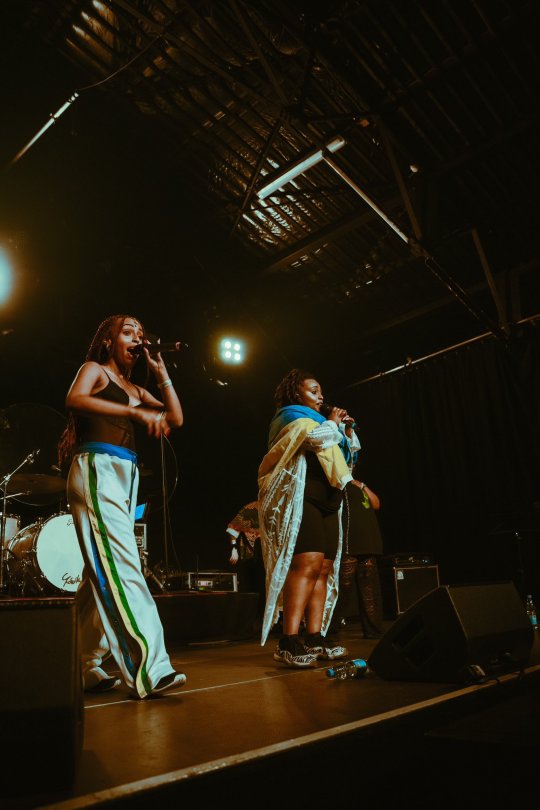

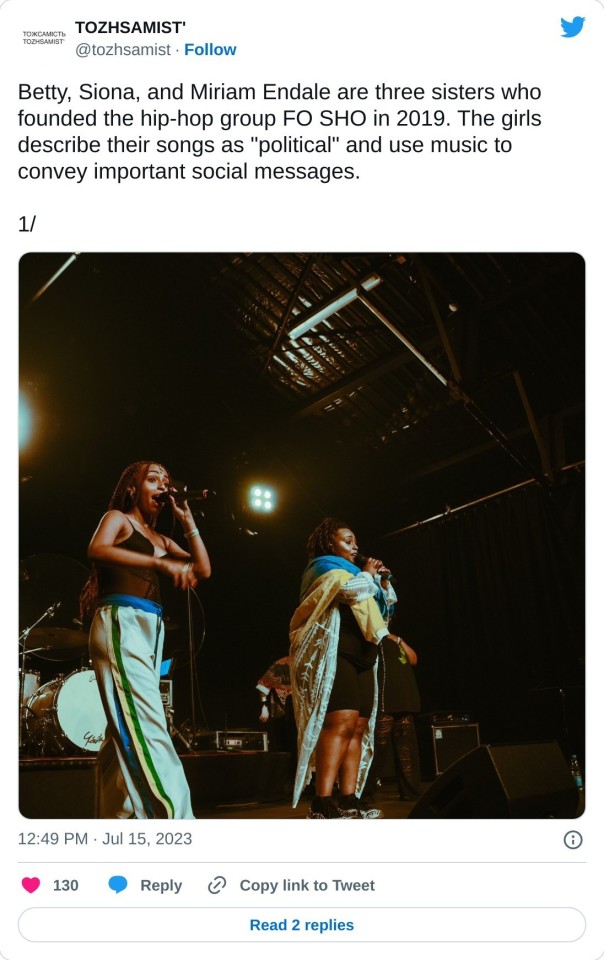

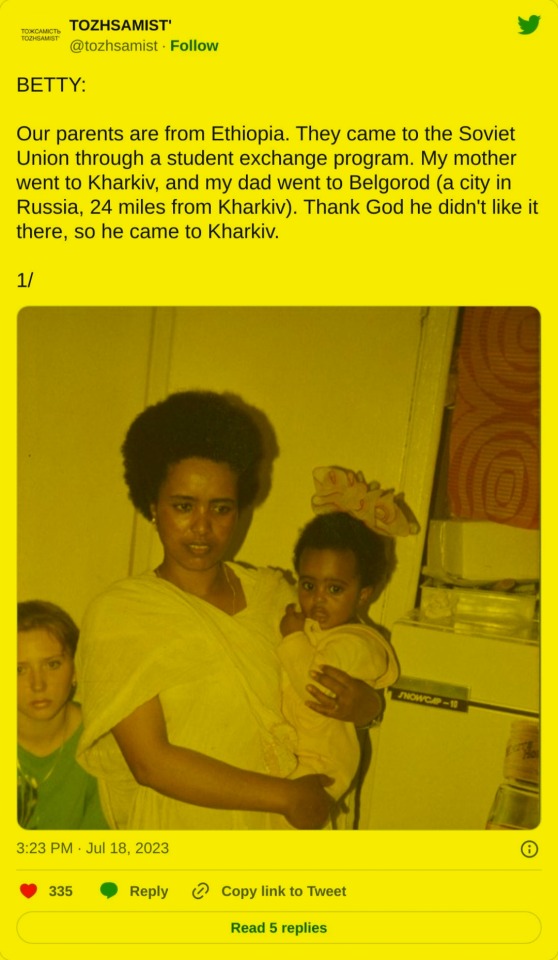


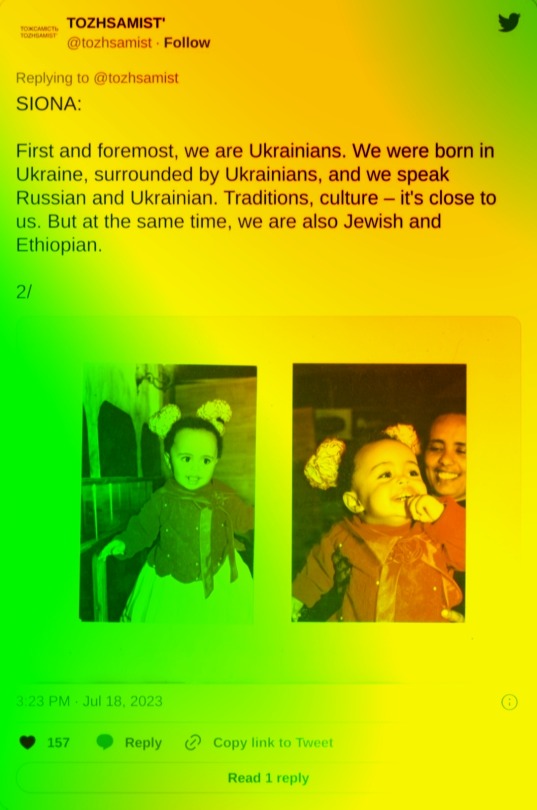

#tozhamist#multiracial#ukraine is multiracial#ukraine resistance#FO SHO#betty siona miriam endale#hiphop#we are ukrainians#stop russian invasion#putin war criminal#stop putin#ukraine war#help ukraine#give weapons to ukraine#i stand with ukraine#slava ukraini
10 notes
·
View notes
Text
These photos show how Ukrainian people really are... 🇺🇦




























#Ukrainians#Ukrainian resistance#Ukrainians are kind people#Ukrainians save their pets#Ukrainians save animals#love#kindness#mercy
6 notes
·
View notes